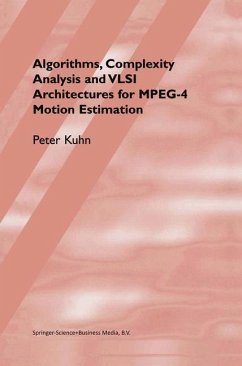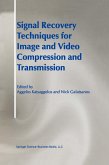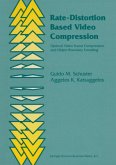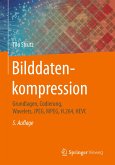MPEG-4 is the multimedia standard for combining interactivity, natural and synthetic digital video, audio and computer-graphics. Typical applications are: internet, video conferencing, mobile videophones, multimedia cooperative work, teleteaching and games. With MPEG-4 the next step from block-based video (ISO/IEC MPEG-1, MPEG-2, CCITT H.261, ITU-T H.263) to arbitrarily-shaped visual objects is taken. This significant step demands a new methodology for system analysis and design to meet the considerably higher flexibility of MPEG-4.
Motion estimation is a central part of MPEG-1/2/4 and H.261/H.263 video compression standards and has attracted much attention in research and industry, for the following reasons: it is computationally the most demanding algorithm of a video encoder (about 60-80% of the total computation time), it has a high impact on the visual quality of a video encoder, and it is not standardized, thus being open to competition.
Algorithms, Complexity Analysis, and VLSI Architectures for MPEG-4 Motion Estimation covers in detail every single step in the design of a MPEG-1/2/4 or H.261/H.263 compliant video encoder:
Algorithms, Complexity Analysis and VLSI Architectures for MPEG-4 Motion Estimation is an important introduction to numerous algorithmic, architectural and system design aspects of the multimedia standard MPEG-4. As such, all researchers, students and practitioners working in image processing, video coding or system and VLSI design will find this book of interest.
Motion estimation is a central part of MPEG-1/2/4 and H.261/H.263 video compression standards and has attracted much attention in research and industry, for the following reasons: it is computationally the most demanding algorithm of a video encoder (about 60-80% of the total computation time), it has a high impact on the visual quality of a video encoder, and it is not standardized, thus being open to competition.
Algorithms, Complexity Analysis, and VLSI Architectures for MPEG-4 Motion Estimation covers in detail every single step in the design of a MPEG-1/2/4 or H.261/H.263 compliant video encoder:
- Fast motion estimation algorithms
- Complexity analysis tools
- Detailed complexity analysis of a software implementation of MPEG-4 video
- Complexity and visual quality analysis of fast motion estimation algorithms within MPEG-4
- Design space on motion estimation VLSI architectures
- Detailed VLSI design examples of (1) a high throughput and (2) a low-power MPEG-4 motion estimator.
Algorithms, Complexity Analysis and VLSI Architectures for MPEG-4 Motion Estimation is an important introduction to numerous algorithmic, architectural and system design aspects of the multimedia standard MPEG-4. As such, all researchers, students and practitioners working in image processing, video coding or system and VLSI design will find this book of interest.








